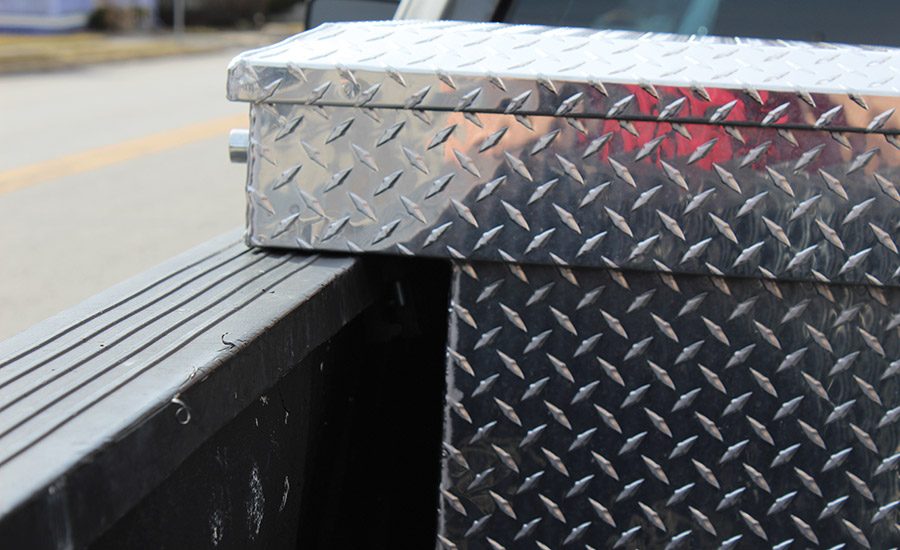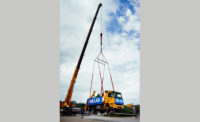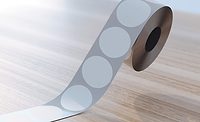Using Structural Adhesives in Car and Truck Accessories Manufacturing
Structural adhesives can play a major role in reducing overall labor and inventory costs while simplifying design and manufacturing processes.




Adding accessories to cars and trucks is a burgeoning and lucrative business for many aftermarket shops. The trend is driven by consumers who are looking to customize and differentiate their vehicles from the standard models on the roadways. While some OEMs are beginning to offer add-on accessories at the dealership, approximately 85% of accessory sales are done through aftermarket accessory shops.
Although most of the accessories are added to new model cars and trucks, there is also a significant market for adding accessories to update older-model vehicles. Another sizable market is accessories for refurbishing antique and vintage cars. Both consumer and accessory shops are creating demand for manufacturers.
Add-on accessories range from roof visors for work trucks to rear-body spoilers for sports cars to special hubcaps or tonneau covers for pick-up trucks. Exterior accessories include deflectors, fenders, grill guards, mud flaps, wheel and bumper covers, LED lighting, truck tool boxes, and running boards. Accessories for interior customizing include dashboards, instrument clusters, steering wheels, panel trims, seating, seat covers, visors, floor mats and carpeting.
Manufacturing Challenges
The challenge for the accessory manufacturer is to design and build components that meet or exceed the requirements of this demanding market. The finish and quality of the added accessory must enhance the appearance or improve the usability of a vehicle. Manufacturers, therefore, are adding engineering resources and looking for new manufacturing methods to ensure that the accessories fit properly, have an attractive appearance, and offer good longevity.
Traditionally, accessory manufacturers have used welding or mechanical fasteners (e.g., bolts and rivets) as a joining method for components. However, welding and mechanical fasteners are not always ideal joining methods. Welds can cause panel deformation and fatigue problems, while mechanical fasteners are prone to stress cracking, cosmetic issues, and leakage concerns.
For example, a welded design on a running-board accessory is prone to corrosion and appearance issues. The “fit-and-finish” does not offer the “Class A” appearance that the consumer wants, and the welded spots are susceptible to corrosion from environmental conditions. Long-term durability is especially crucial for parts that are exposed to extreme weather conditions such as humidity, heat, cold, rain, and snow. Additional examples that show the difficulties with welding or mechanical fastening include: a spot-welded hub-cap assembly that may corrode or become less durable over time; fastened rear-body spoilers, made of composites or thermoplastics, that can crack or split due to stress concentrations; and bolted and riveted truck-bed tonneau covers plagued with multiple problems such as water leakage, reduced stiffness and corrosion at the fastening points.
Structural Adhesives
As an alternative to welding and fastening, many accessory manufacturers are choosing structural adhesives as a joining method. Structural adhesives can eliminate the problems encountered with traditional joining methods, such as warpage, substrate damage, stress concentrations and leakage. Other benefits of using structural adhesives include the ability to bond and seal in one step, improved cycle time, and reduced labor costs.
Structural adhesives have been trusted and used in the automotive, marine and aerospace industries for more than 50 years. Over this period, substrate materials, assembly processes, and structural adhesives have all progressed to offer highly durable and corrosion-free parts assembly with improved appearance at lower costs combined with better warranty results. As OEMs realize the benefits of incorporating structural adhesives in the manufacturing process, aftermarket parts manufacturers are following suit.
Either acrylic or urethane structural adhesives are appropriate for bonding accessory components. Acrylic adhesives are ideal for bonding bare or prepared metals and for cross-bonding metals to composites. Urethane adhesives perform well when bonding plastic to plastic materials, and various plastics and composites to painted or primed metals.
Adhesive Advantages
The capability of structural adhesives to bond and seal in one step is a major benefit. This is especially important for exterior parts that must be sealed and protected from the elements. The adhesive acts as both a structural bond and a gasket, which reduces labor steps while improving warranty performance.
As an example, many manufacturers use welding to manufacture tonneau covers. The covers are riveted together and seam-sealed around the perimeter of the panel frame. However, regardless of how much sealer is used, leakage still occurs. By switching to structural adhesives to join the frame, a manufacturer can seal and bond in one step and eliminate any leakage concerns.
Structural adhesives will also provide longer fatigue life than welded or fastened parts because stress concentrations are minimized as the surface area is maximized. Rivets and fasteners, when used on plastics, tend to develop stress concentrations, making the parts more susceptible to cracking or fatigue damage over the life of the part. Structural adhesives offer a robust, reliable bond without durability and longevity concerns.
Inventory, labor and training reductions are additional advantages of using structural adhesives. Welding and mechanical fastening procedures require a large amount of equipment and parts to be ordered and kept in stock. When using adhesives, most manufacturers will need to only keep one type of adhesive in stock, along with automated or hand-held dispensing equipment. This helps to reduce the amount of inventory needed.
It is also easier to train personnel on the proper techniques for applying adhesives. While personnel must be trained to install rivets and mechanical fasteners correctly, and drill holes to the right specifications, the learning curve is much quicker for adhesive application. Similarly, the equipment and training needed for welding and the re-work required is also eliminated.
In addition to fatigue, appearance and warranty improvements, a manufacturer using structural adhesives will also realize cycle-time improvements and labor savings due to fewer required assembly steps. Many adhesives reduce or eliminate the need for surface preparation of the substrate being bonded, improving production throughput. Various structural adhesive formulations are available that offer different cure speeds, so a manufacturer can match the cure speed to manufacturing specifications. Structural adhesives are also designed to withstand the high heat of e-coating, powder coating or paint bake processes.
For additional manufacturing and design support, an accessory parts manufacturer should consult with the adhesive supplier. A reliable supplier will be able to help a manufacturer choose the structural adhesive that best meets the manufacturing process, and can offer testing and validation to aid in selecting the right adhesive for the application.
The increasing demand for add-ons, accessories, and upgrades to consumer vehicles has led to a growing market. Aftermarket parts manufacturers must keep up with the demand to satisfy the needs of the aftermarket shops and the consumer. For the manufacturer, structural adhesives can play a major role in reducing overall labor and inventory costs while simplifying design and manufacturing processes. ASI
For more information, visit www.lord.com.
Looking for a reprint of this article?
From high-res PDFs to custom plaques, order your copy today!







